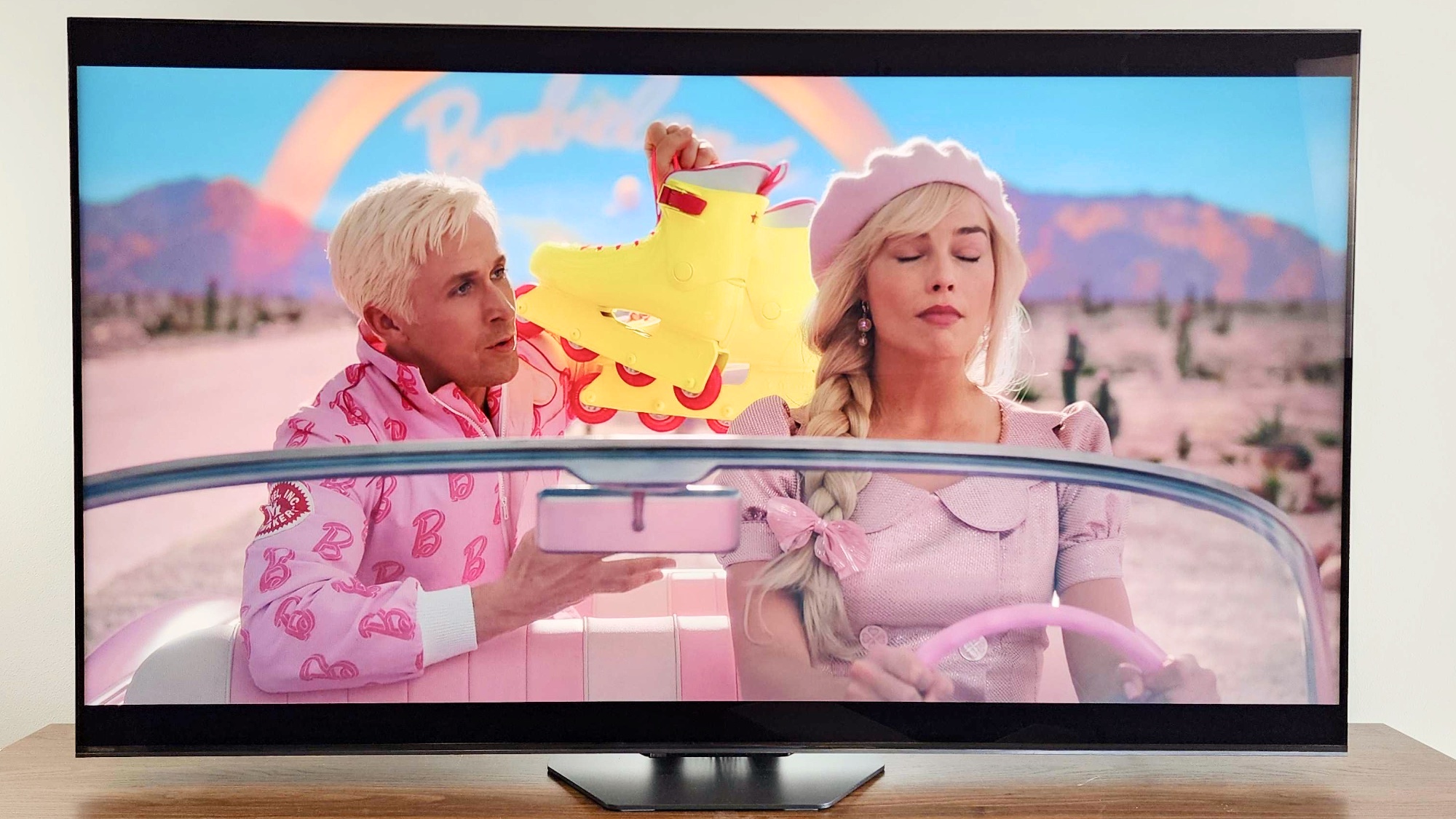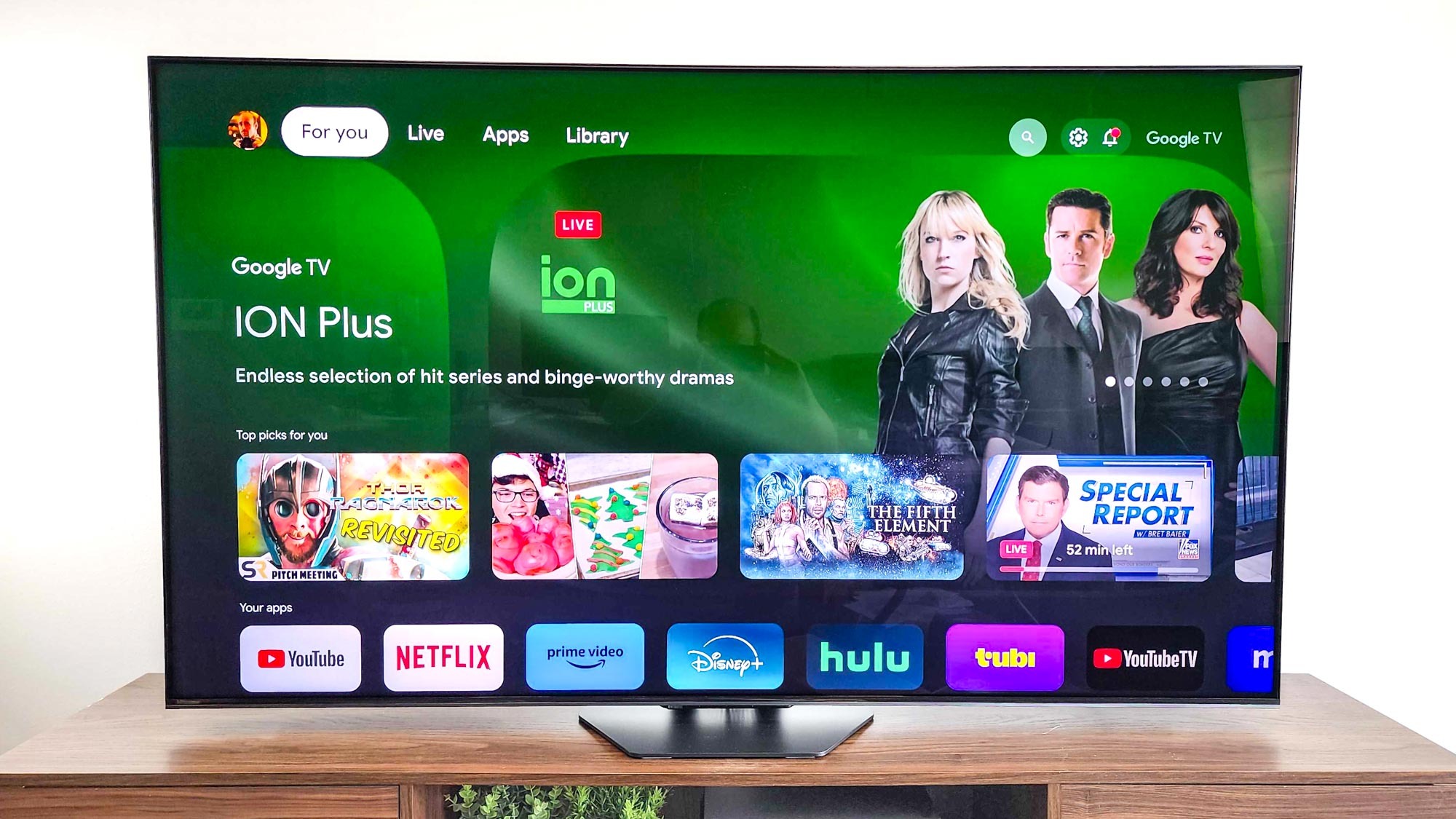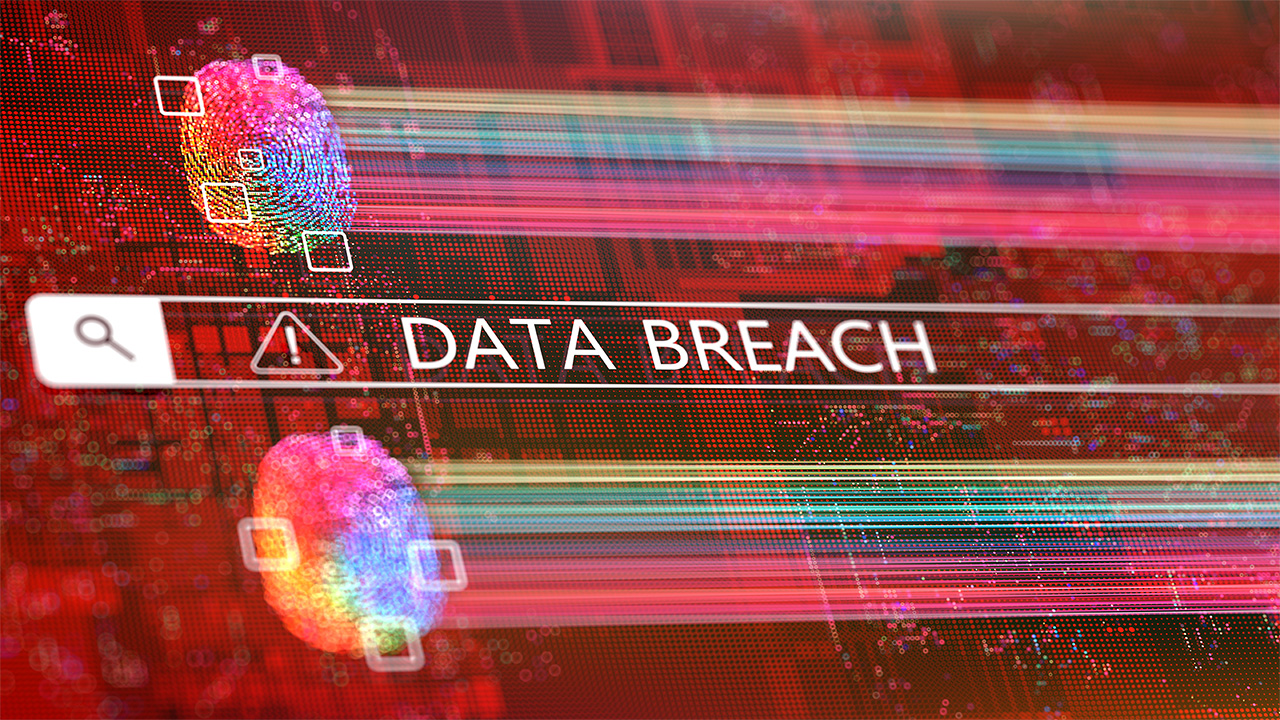
Hisense may not be as well known as Samsung or LG yet, but its latest U8N model is ready to give the biggest players in TVs a run for their money. According to our test data taken last week, the Hisense U8N Mini-LED TV is every bit as good as their top models, and it's quite a bit cheaper, too.
While the Hisense U8N's release date is still listed as "Coming Soon" on Best Buy's website, our early lab tests show that it has exceptional brightness of around 3,000 nits in HDR and SDR and a 99% color gamut coverage of both the Rec 709 and 96% of the DCI-P3 color spaces. (Not sure what that means? Don't worry, I'll explain it.)
We’ll need to corroborate what we’ve seen in the lab with real-world testing on the couch (i.e. the fun part of the job) but, from what we’ve seen so far, the Hisense U8N could easily claim the top spot on our list of the best TVs of 2024. Here’s what we're seeing in our tests so far.
Hisense U8N test results
| Row 0 - Cell 0 | Hisense U8N (2024) | Hisense U8K (2023) | Samsung QN90C |
| Price for 65-inch screen | $1,499 | $999 | $1,599 |
| SDR Brightness (10%, in nits) | 3469.0 | 1536.5 | 794.8 |
| Delta-E (lower is better) | 3.2403 | 4.4614 | 2.2404 |
| Rec. 709 Gamut Coverage | 99.86% | 99.83% | 99.19% |
| HDR Brightness (10%, in nits) | 3397.9 | 1788.3 | 1987.3 |
| UHDA-P3 Gamut Coverage | 96.76% | 97.51% | 95.81% |
| Rec. 2020 Gamut Coverage | 81.92% | 80.41% | 77.15% |
| Input latency (in milliseconds) | 13.1 | 13.2 | 9.7 |
Even without knowing exactly what each test means, a cursory glance at the above table should show you that the Hisense U8N — available in a 55-inch screen size for $1,199; a 65-inch screen size for $1,499; or a 75-inch screen size for $1,999 — is better than both its predecessor and a comparable Samsung 2023 TV.
With HDR content, the Hisense U8N can get above 3,000 nits in a 10% window compared to the 2,000 nits of the Samsung QN90C and U8K.
The primary aspect that the U8N is better is its brightness, both with SDR content and with HDR content. With HDR content, the Hisense U8N can get above 3,000 nits in a 10% window compared to the 2,000 nits of the Samsung QN90C and U8K.
One common misconception about brightness is that a TV will often default to its maximum brightness — that's simply not true. A high brightness level is important because it shows what a TV can output in a particularly bright scene, like say a scene that has an explosion or fireworks, objects that you want to see as bright as possible.
The drawback of other TVs is that, as bright objects appear on the screen, it messes up the contrast. But thanks to its Mini-LED backlight of thousands of local dimming zones, the U8N shouldn't have visible blooming. You won't get the same contrast that OLED gives you, but you're getting four times the peak brightness.
Get instant access to breaking news, the hottest reviews, great deals and helpful tips.
When talking about color gamut, imagine a bucket that contains all the colors the human eye can see. Each of our color gamut tests are like smaller buckets that hold fewer colors. We measure these "color buckets" in percentages. In the smallest bucket, the Rec709 color gamut, the U8N can hold 99.86% of all the possible colors. It can output 96.76% of the colors found in the medium-sized DCI-P3 bucket, and 81.92% of the largest Rec2020 bucket. The most colorful TV we've ever tested, the Sony A95L OLED, holds the record at 89.56% of the Rec2020 color gamut, but it costs $3,499 compared to the $1,499 65-inch Hisense U8N.
Brightness and color are related aspects. Having a high brightness often means better color saturation, and that's especially been true with Hisense TVs. The only TV that's ever come close to this level of brightness was Hisense's own UX TV from last year, but that only came in a single screen size of 85 inches and had a sticker price of $3,799. The Hisense U8N offers even better brightness for half the cost.
Is the U8N this year's best TV?

While the test data paints a pretty telling picture, there's two things that could hold the Hisense U8N back from taking the top spot on our list of the best TVs — namely, its upscaling and motion processing. These are two areas that we can't test with our current equipment, and we rely on testers' eyes.
Processing has been an area that Hisense has struggled with in past years. When testing last year's Hisense U8K I noticed a lot of grain in HD/SDR films that wasn't cleaned up properly in the upscaling process. I also had a better experience when I turned motion processing to 'low' or 'off' rather than leaving it on 'medium'.
Hopefully those are areas where Hisense has improved year-on-year and we'll know more once we've got the Hisense U8N out of the labs and into the living room.
If you're in the market for an alternative to higher-end QLED TVs without paying the Samsung or Sony tax on them, the Hisense U8N is very much worth waiting for.
More from Tom's Guide

Nick Pino heads up the TV and AV verticals at Tom's Guide and covers everything from OLED TVs to the latest wireless headphones. He was formerly the Senior Editor, TV and AV at TechRadar (Tom's Guide's sister site) and has previously written for GamesRadar, Official Xbox Magazine, PC Gamer and other outlets over the last decade. Not sure which TV you should buy? Drop him an email or tweet him on Twitter and he can help you out.
